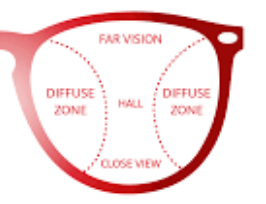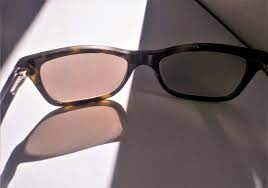When it comes to vision correction there are various options available to meet individual needs. Progressive lenses and Transition lenses are two popular choices that offer unique features and benefits.
Progressive Lenses
Progressive lenses, also known as multifocal lenses or no-line bifocals are designed to correct vision at multiple distances seamlessly. They are an advanced alternative to traditional bifocal or trifocal lenses which have visible lines separating different optical powers.
How Progressive Lenses Work
Progressive lenses feature a gradual and continuous change in optical power from the top to the bottom of the lens. This allows wearers to see clearly at various distances including near, intermediate and far. There are no visible lines on progressive lenses providing a more aesthetically pleasing appearance compared to traditional bifocal or trifocal lenses.

Advantages of Progressive Lenses
- Smooth Transition:
Progressive lenses offer a smooth transition between different focal distances allowing wearers to shift their gaze without noticeable interruptions. This makes them ideal for activities that require clear vision at various distances such as reading, using a computer or driving.
- Natural Vision Correction:
Progressive lenses mimic the natural focusing ability of the eyes providing a more natural and comfortable viewing experience compared to traditional bifocal or trifocal lenses. There are no abrupt shifts in vision as wearers look through different parts of the lens.
- Aesthetically Pleasing:
Progressive lenses eliminate the visible lines found in traditional bifocal or trifocal lenses resulting in a more attractive appearance. This is especially beneficial for individuals who prefer a more youthful and sophisticated look.
Transition Lenses
Transition lenses are also known as photochromic lenses and are eyeglass lenses that automatically darken in the presence of ultraviolet (UV) light. They provide the convenience of clear lenses indoors and the added protection of sunglasses outdoors.
How Transition Lenses Work
Transition lenses contain special photochromic molecules that react to UV light. When exposed to UV rays the molecules undergo a chemical reaction that causes the lenses to darken. Once the UV light is no longer present such as when indoors or at night the lenses gradually return to their clear state.

Advantages of Transition Lenses
- UV Protection:
Transition lenses offer built-in UV protection shielding your eyes from harmful UV rays emitted by the sun. This helps reduce the risk of eye conditions caused by prolonged exposure to UV light such as cataracts and macular degeneration.
- Convenience:
With Transition lenses there’s no need to switch between regular eyeglasses and sunglasses when moving between indoor and outdoor environments. The lenses automatically adjust their tint according to the level of UV light providing optimal visibility and comfort in various lighting conditions.
- Versatility:
Transition lenses are available in different colors and tint options allowing you to customize the level of darkness according to your preferences. Whether you prefer a subtle tint or a more noticeable darkening effect there’s a Transition lens option for you.
Progressive lenses and Transition lenses are both innovative solutions in the field of vision correction. Progressive lenses provide seamless vision correction at multiple distances without visible lines while Transition lenses offer the convenience of clear lenses indoors and automatic darkening outdoors. Ultimately, the choice between progressive lenses and transition lenses depends on your specific vision needs and preferences. An eye care professional can help you determine which type of lens is best suited for your lifestyle and visual requirements.






